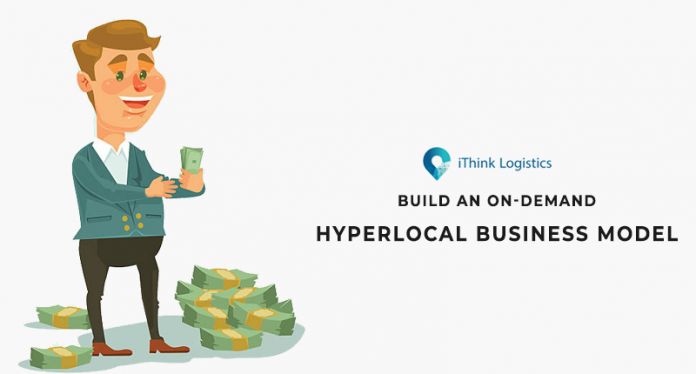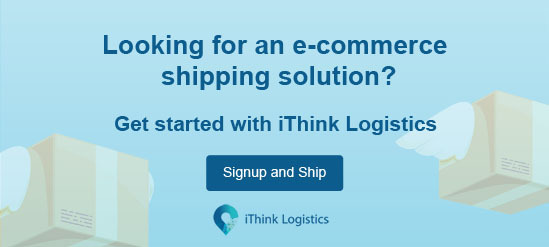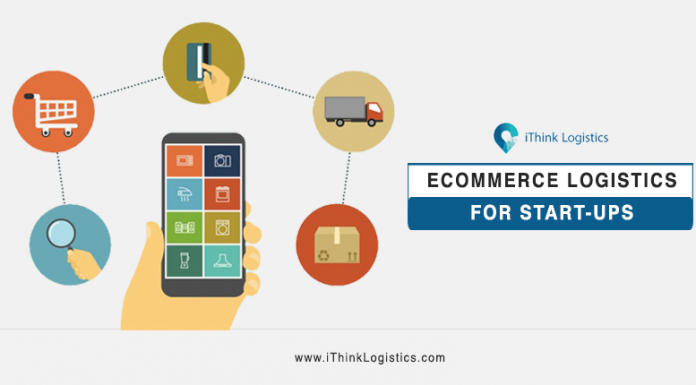Due to the outbreak of this global pandemic, many consumers are confined to their homes and thus they are not able to go to their traditional markets for goods or any sort of essential. Therefore, consumers have turned towards on-demand deliveries that will help them get their heir essential stuff at their doorstep. The logistical industry and businesses are thriving hard to create an on-demand hyperlocal business model so that the consumer’s requirements could be met.
This pandemic has changed the entire economic system. It has shaken the entire operative structures and retailers have finally changed their perception of the on-demand delivery system. In these difficult times, it is very important to grab on to any opportunity that opens up the door to any sort of growth or development. Retailers are not adopting the on-demand delivery system, they are suffering are a huge loss in their businesses. They are desperately looking for alternative ways to stabilize their business and the best option that seems so far is the option of on-demand hyperlocal deliveries.
What do you mean by the on-demand Hyperlocal business model?
This is a business model that tends to connect the offline local marketer and business holders to the customers via the digital platform. This platform helps the customers to order or purchase their essential items or services like healthcare items, grocery items, etc. at the comfort of their home along with easy access.
In the particular hyperlocal delivery model, the logistic service provider takes the request of the customer, fetches that particular item from any nearby shop, and delivers it to its suitable customer. During the whole process, the customers can track the entire process and even get real-time information about it.
Why hyperlocal demand deliveries are preferred by the consumers and the logistic providers?
Communities and localities have a desperate need for on-demand delivery services. These deliveries are mainly hyperlocal by nature and thus they can be catered to during immediate needs. The transaction process is also very compatible and easily accessible in these deliveries. A single transaction can be completed with just an hour in on-demand hyperlocal businesses. The other primary reason for trusting the hyperlocal on-demand delivery services than the non-hyperlocal ones is its actual physical presence. The physical attire of the stores makes it quite easier to attend to the customer’s grievances.
Logistics and deliveries do not mean the same thing for non-hyperlocal and hyperlocal businesses. Hyperlocal businesses don’t worry about things like long-distance transportation, warehousing, or logistics fragments. The only logistics that affects the hyperlocal businesses is the last-mile delivery. Around the locality, their businesses ride on the retailers. The reverse logistics is not that of a big deal for the hyperlocal on-demand business as they only operate within limited areas.
What exact services fall under the wings of the hyperlocal on-demand business model?
This business model is very cost-effective and affordable. It is quite convenient for people living in urban areas. Many services come under this business model. However, the primary service is to provide the most convenient and suitable delivery of items to the customers. There are some services listed below that come under the wings of the hyperlocal on-demand delivery businesses:
Personal residential and home care services
The services include salon services, beauty regiments, spa services, etc. May be these services do not fall under the absolute necessary list, but it is very crucial especially during these times when people are going through a lot. These services can provide the common masses with some sort of comfort.
Services related to food ordering
This is one of the most needed and crucial services provided by the business. People tend to order food almost daily. During this pandemic, this service is more relevant and crucial than ever, as people cannot physically go around to stores and restaurants for grabbing food.
Handyman services
These services include carpentry, plumbing, gardening, electrician, etc. These services can be beneficial both ways. Both the customer and the provider will be benefited. The customer will get its services and the person providing it can earn some money during these difficult times. During this pandemic, people cannot reach put to local service providers if they need any sort of handyman services. Therefore, it will be a great help for the customers if they can get a hand on plumbers or electricians at their fingertips.
Healthcare services at home
These services include baby care, caregiving, senior care, etc. During this time, it could be both difficult and overwhelming to take care of kids as well as senior members along with all the household work at hand. People will find it crucial to hire some sort of assistance during this time. Therefore, if they can hire personnel at the comfort of their home, it will not only be helpful for them but also be very beneficial for your business. Even if you charge some extra money on the services during this time, people won’t hesitate much before taking it as they can hardly manage to find some other better service during the pandemic.
Services related to grocery delivery
Due to the commencement of social distancing, the common masses are avoiding the crowded traditional market places. As the stocks at their home are not lasting for long, they are ordering groceries online. This is one of the primary reasons that the online grocery delivery business is seeing immense growth in their profit margins. It is the best time to take your grocery business to an online platform.
How to set up your business around an on-demand hyperlocal delivery model
Investors and logistic businesses have been eyeing this model as a very profitable business venture. They are aiming to provide customers with the best online purchasing experience by providing their respective needs and desires. Logistic companies that plan on adopting the hyperlocal model, they should probably launch their business by following some traditional patterns. The patterns should be process-driven. The following steps need to be followed for building the model:
- First, you need to select your industry depending upon its market size, development potential, probable competition, and as such.
- Then you need to identify the particular niche of the industry, and then target your resources and market. Identifying the niche is very crucial because your whole business development can fall or rise upon that particular decision.
- Form a strategy that can help you market the services you are providing. However, this should be done only after you have determined your target audience.
- Build strong connections and partnerships with delivery companies and local businesses. You must have a proper partner to support your business.
- Then you need to plan out your revenue flow depending upon the commissions that are earned from the particular merchant partners and the delivery charges received from customers.
- The final step is to find a suitable technology partner or an app development service for building an on-demand delivery app.
How technology is benefiting the hyperlocal on-demand delivery models?
Logistic companies that are planning on adopting the hyperlocal model aims at improving customer services and their shopping experiences. Technology plays a pivotal role in insulating that.
Ways in which technology helps logistic companies:
Countering the traffic congestion
Customers from various localities have various needs. Urban traffic makes it very complex for conducting hyperlocal deliveries. If you can make proper use of technology, then you can plan better routes that efficient and time conserving.
Bearing the costs of free delivery
The hyperlocal businesses get their revenue from two primary sources: one is from the commission that is earned from the merchants and the second is from the delivery charges received from the consumers. However, customers nowadays are very sensitive to additional delivery charges and expect free delivery on purchase. Along with that customer also expects flexible delivery. Catering to such demands can take up cost in the last-mile delivery. Therefore, automation is the only remaining option that can help you sustain the costs related to free shipping.
Easy access to allocating delivery zones
Automation helps your business to find suitable and sustainable delivery zones. It can help you find suitable routes that do not incur the last mile delivery charges. Moreover, it is very difficult to assign each delivery zones when there are thousands of orders from various localities.
Maintaining the efficiency of the fleet
For any hyperlocal logistical business, it is very important to maintain the productivity and efficiency of the fleet. In this mad technological era, suitable technology is the only significant option for marinating the efficiency of the fleet. The optimization of the delivery routes can help in the reduction of extra costs.
Conclusion
The success in logistic business lies in fulfilling customer needs and desires. The hyperlocal business industry is facing difficulty in fulfilling customer’s expectations of rapid delivery at their doorsteps. Without technology, it is difficult for logistic companies to cope up with these on-demand deliveries and that is why they need a proper business model for it.










